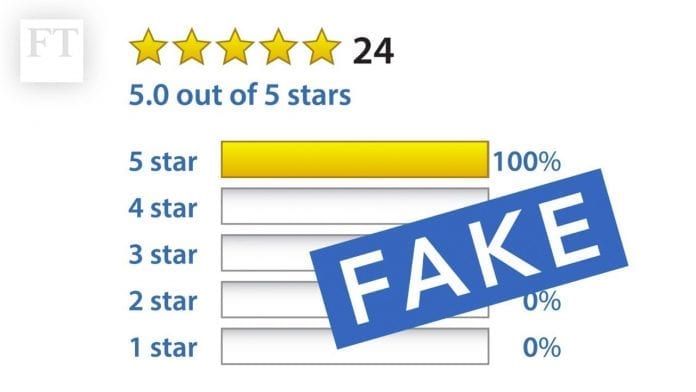Negative online reviews have positive and negative aspects. How you respond to them can determine whether the cons will outweigh the pros. One of your primary targets as a business owner should be to enhance customer satisfaction and minimize the negative feedback you get with online reviews.
A research study by MOZ shows that a whopping 70% of customers are likely to shun businesses that have been reviewed negatively in more than three articles on the internet. That is nothing to sneeze at if a considerable number of your customers come from online traffic sources. Read on for eight workable ways to deal with negative online reviews and reduce their impact on your business.
1. Do not delete bad reviews

Some reviews can hit so close to home that you might be tempted to delete them, whether it’s out of anger or simply because they are overstated or too damaging to your image. While this might produce instant results, if someone sees this happen and perhaps takes a screenshot, they could expose you and ruin your image to an even greater degree.
All brands, including behemoths like Apple and Google, receive negative comments, but they are eventually buried in a sea of positive reviews. If you are doing the right thing or are quick to make tweaks, those nasty comments will eventually vanish.
2. Reply to negative feedback

Good marketers know the impact of online reviews and how responding to them can neutralize some of this impact. According to this site, small business marketers spent an average of nine hours per month responding to reviews. While this may seem like a waste of time, it works. Replying to comments shows you care about your customers’ opinions even if they express disapproval. Your response may elicit a change of mind from prospects who would have otherwise opted out due to a negative comment.
It is also worth noting that there is nothing wrong with disputing a review. If an opinion or sentiment is wrong, you should find a way to correct it politely and accurately. Just don’t make it seem like you are defending yourself, as it may portray you as temperamental.
3. Respond to fake reviews

Fake reviews are usually short, aggressive, and filled with product information anyone can find on the internet. It can be difficult to tell genuine from fake reviews, but if you perceive a fake one, it is advisable to maintain your professionalism and respond to it as you would a genuine one. The reason for this is that your readers won’t know you are replying to a fake reviewer unless you point it out in your response, which is one way to look unprofessional.
4. Learn and take action
Not all negative reviewers are there to tarnish your name. Some are airing their genuine dissatisfaction with your product or how you conducted a transaction. Listen to these lengthy, yet straight-to-the-point views, and try to see if they hold any water. Sometimes it is a small error in a product or service that none of your production, marketing, or sales reps have perceived, or a repeating communication blunder. Taking such specific complaints and criticism seriously can help you nip oversights in the bud and steer clear of future embarrassments or unnecessary loss of business.
5. Get in touch with the reviewers
If a negative review comes from a long-term customer or a concerned potential customer or contains something you don’t understand, consider contacting them directly after responding to their review. You can also insert your contact information in the response if you prefer they contact you instead. Direct communication with a genuinely dissatisfied customer can give you a better view of your product and brand from the customer’s perspective and help you make changes and streamline your digital marketing strategy.
You may not get the time to call or email each one of your reviewers, but it would help if you identified individuals with specific grievances. Also, consider finding a few individuals to reply to if the same issue, particularly one you don’t already know about, keeps appearing in new reviews.
6. Flaunt those fixes
As stated above, some reviews can help you identify a product or transaction error that can cost you a fortune. Once you fix the issue, it is okay to go back to the review that brought the fault to your attention and issue another response, telling them that their complaint has been addressed. Don’t stop there; take screenshots of the thread and post it on your website and social media.
Believe it or not, this will have a sway on some of your prospects’ purchase decisions. It can improve customer loyalty too.
7. Respond to the oldest reviews first
The appearance that you are dodging some reviews is almost as bad as not responding at all. Most review sites arrange reviews in chronological order, with the latest additions appearing at the top. Always respond to the old reviews before the new ones. That is not to say you should read reviews only when you are ready to respond to them. It is okay to read recent reviews, but don’t fall for the temptation of replying to feedback from a week ago, when there are pending reviews from last month.
8. Don’t let them get to you
Running a business is no easy task. You will face all kinds of barriers and discouragement, and it’s only wise that you don’t let negative reviews affect your performance and productivity. Every successful entrepreneur has been on the receiving end of mudslinging at least once in their journey to the top. Resilience is bound to keep you on the right track and expedite your business’s progress.

Endnote
Negative reviews will always be there, and not everyone will be happy about your product, service or even your customer support or sales teams. The above tips can help you get through them and change the outlook of your dissatisfied customers. The bottom line is to ensure they don’t affect your business operations or slow down your growth.









